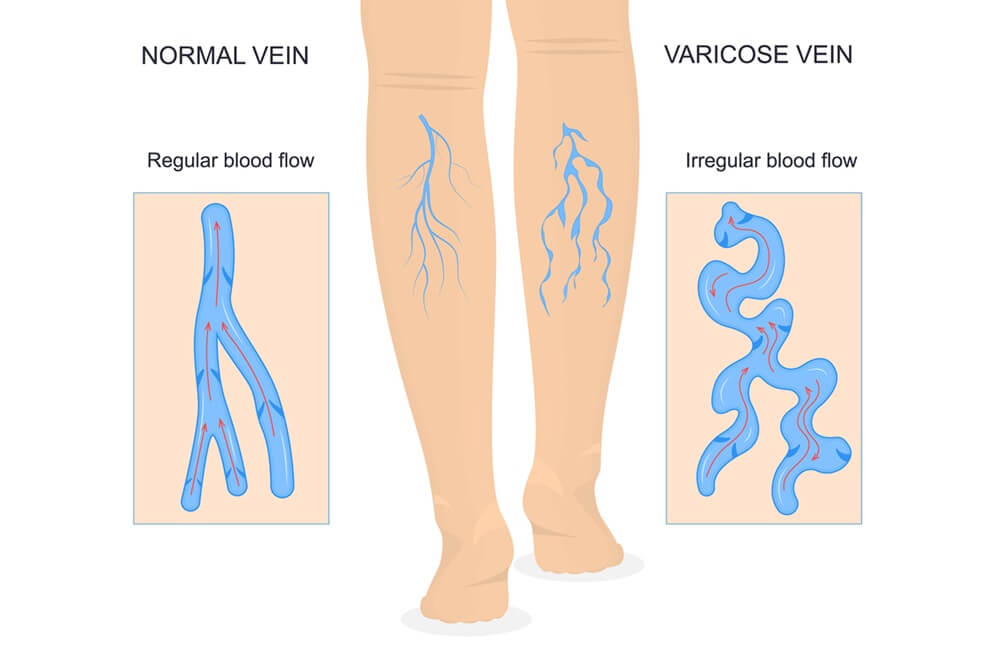
Varicose Veins: Non-Surgical Solution
Interventional radiology is one of the effective non-surgical solutions for treating varicose veins, with Endovenous Laser Ablation being one of the most common and widely used techniques. The session takes about 45 to 60 minutes to perform, and the results are visible within a period ranging from weeks to months after the session. This technique is an option for treating varicose veins in the following cases:
-
Desire to improve the appearance of varicose veins.
-
Relief of varicose vein symptoms, especially pain, redness, and irritation.
How is interventional radiology used to treat varicose veins?
Interventional radiology is used to treat varicose veins based on ultrasound guidance as follows:
-
Making a small incision in the skin, usually not exceeding one or two millimeters, unlike surgical incisions, which are usually larger. This incision is made near the area affected by varicose veins after applying local anesthesia, so the person remains awake during the procedure.
-
Inserting a catheter (a tube) into the vein affected by varicose veins. It's worth mentioning that the catheter tube is equipped with a small optical fiber probe, which is guided using ultrasound waves.
-
Transmitting laser energy from the device to the vein through the probe, so that the laser heat destroys the varicose vein tissues. This allows the vein to be closed and sealed, eventually absorbed by the body, and its traces disappear from the legs during the period following the session.
Is interventional radiology effective in treating varicose veins?
Yes, its success rate can reach around 98%.
Advantages of interventional radiology for treating varicose veins
Advantages of interventional radiology for treating varicose veins include:
-
Quick healing and recovery.
-
Safer compared to surgery, as there is no need for general anesthesia, thus avoiding the side effects associated with general anesthesia.
-
Fewer side effects, even pain during the session is minimal.
-
No need for hospital stay, as the session is often conducted in outpatient clinics, and the patient can return to normal life on the same day.
-
Achieving better therapeutic results, including: improving the appearance of the legs, relieving varicose vein pain, and reducing the chances of varicose vein-related health complications (such as skin ulcers).
Tips after interventional radiology session for treating varicose veins
Tips after interventional radiology session for treating varicose veins to improve the results and effectiveness of the procedure include:
-
Wait for at least 14 days before engaging in intense activities or lifting heavy objects, while light activities or walking can be resumed on the same day or the day after the session.
-
Avoid exposure to sunlight and hot baths during the periods before and after the session.
-
Adhere to wearing compression stockings for 2-4 weeks after the session.
-
Apply cold packs or ice wrapped in a towel to the varicose vein area to reduce swelling that may result from the session.
-
Follow the doctor's instructions regarding maintaining the cleanliness of the small incision site; such as not removing the dressing until two days after the procedure, during which it is advisable to avoid exposing the area to water.
-
Keep your leg elevated when sitting, and avoid sitting or lying down or standing for long periods.
